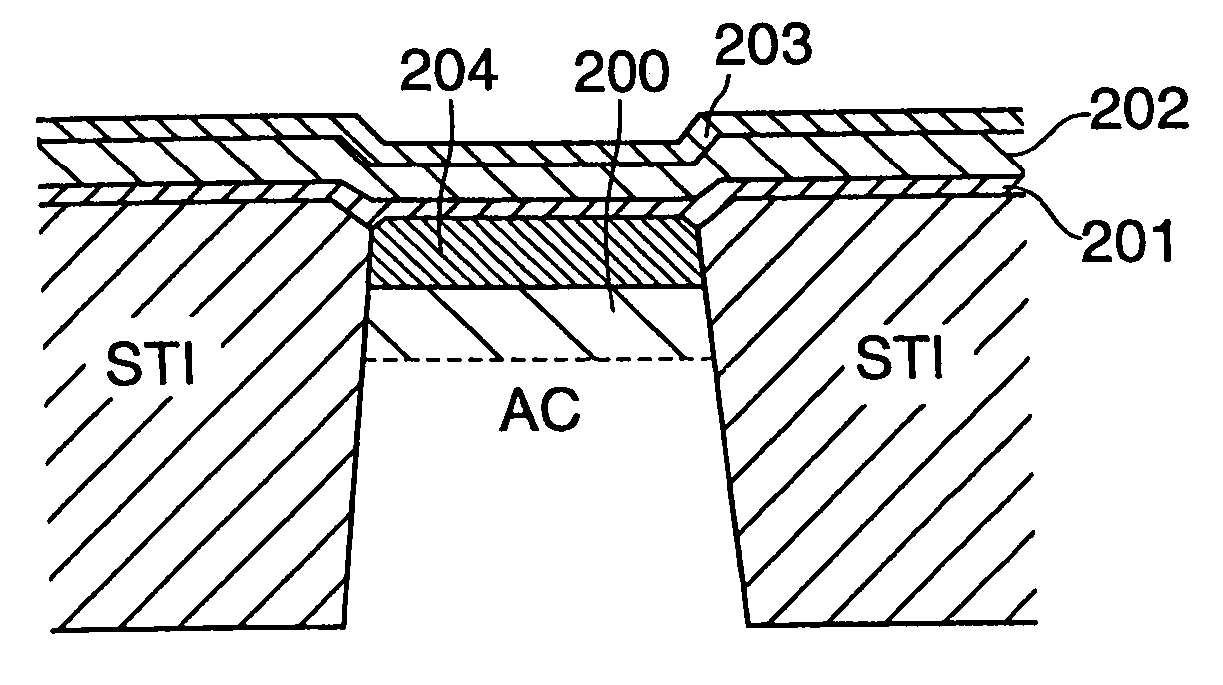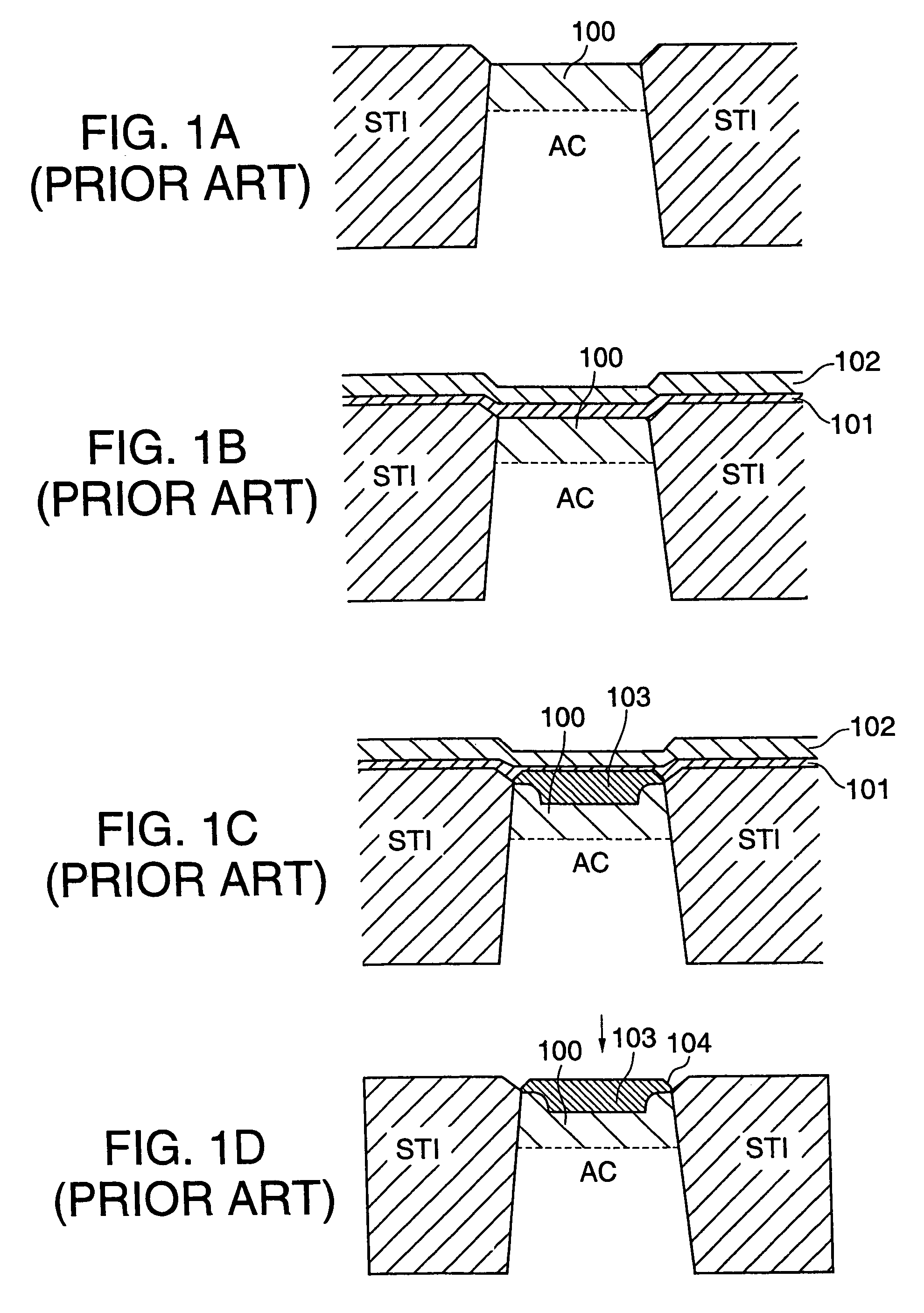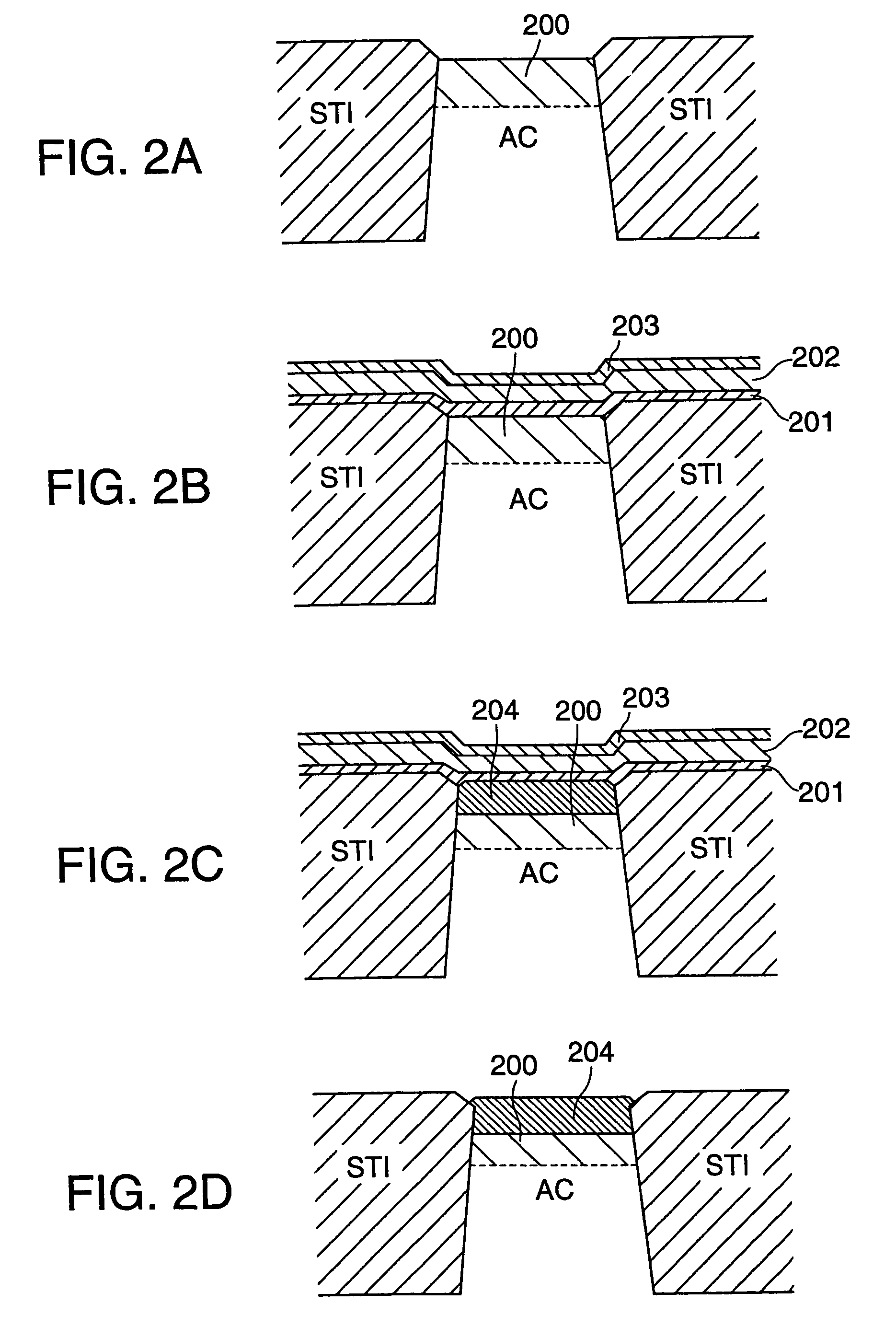Forming method of silicide film
- Summary
- Abstract
- Description
- Claims
- Application Information
AI Technical Summary
Benefits of technology
Problems solved by technology
Method used
Image
Examples
first embodiment
[0034]The first embodiment of the invention is shown in FIG. 2. First, the silicon substrate is isolated using the conventional technique, the STI area and active area are formed, and the diffusion layer 200 is formed in the active area (FIG. 2A). Subsequently, the treatment of the ammonia peroxide mixture and buffered fluorinate acid is done for 60 seconds (this is corresponding to the etching conditions of the thermal oxidation film of 20 Å), in addition, isopropylalcohol-drying is performed.
[0035]Next, following steps are performed successively by the multi-chamber sputter equipment. First, the degassing is done, next the sputter-cleaning is done, then the cobalt film 201 is deposited in 60 Å, and the titanium nitride film is deposited in 200 Å. Herein, conditions of the processes except for the sputter step of titanium nitride are the same as that of the prior art: the degassing is done at 300° C. for 60 seconds, and the sputter-cleaning is done under the conditions that RF (60 ...
second embodiment
[0040]The second embodiment of the invention is shown in FIG. 3. The silicon substrate is isolated using the conventional technique, the STI area and the active area are formed, and the diffusion layer 300 is formed in the active area (FIG. 3A). Subsequently, in order to remove the natural oxidation film on the diffusion layer 300, the treatment of the ammonia peroxide mixture and buffered hydrofluoric acid is performed for 60 seconds (this is corresponding to the etching conditions of the thermal oxidation film of 20 Å), in addition, the isopropylalcohol-drying is performed.
[0041]Next, the following steps are performed successively by the multi-chamber sputter equipment. First the degassing is done, next the sputter-cleaning is done, then the cobalt film 301 is deposited in 60 Å, the titanium film 302 is deposited in 50 Å, the titanium nitride film 303 is deposited in 300 Å, and the titanium film 304 is deposited in 50 Å (FIG. 3B). Herein, for the respective treatment conditions, t...
third embodiment
[0046]The construction of the equipment for use in the third embodiment of the invention is shown in FIG. 4. Each of chambers has been evacuated. Herein, the method for achieving the first embodiment is described using the equipment shown in FIG. 4. The silicon substrate is isolated using the conventional technique and the STI area and the active area are formed, as shown in FIG. 2A. Herein, in order to remove the natural oxide film on the diffusion layer 200 formed in the active area, the treatment of the ammonia peroxide mixture and buffured hydrofluoric acid is done for 60 seconds (this is corresponding to the etching conditions of the thermal oxidation film of 20 Å), in addition, the isopropylalcohol-drying is performed.
[0047]Next, the substrate is introduced into a load lock chamber 401 (or the load lock chamber 402), and introduced into a preheat chamber 404 via a separation chamber 403, and then the degassing is done, for example, at 300° C. for 60 seconds. Then, it is transf...
PUM
 Login to view more
Login to view more Abstract
Description
Claims
Application Information
 Login to view more
Login to view more - R&D Engineer
- R&D Manager
- IP Professional
- Industry Leading Data Capabilities
- Powerful AI technology
- Patent DNA Extraction
Browse by: Latest US Patents, China's latest patents, Technical Efficacy Thesaurus, Application Domain, Technology Topic.
© 2024 PatSnap. All rights reserved.Legal|Privacy policy|Modern Slavery Act Transparency Statement|Sitemap



